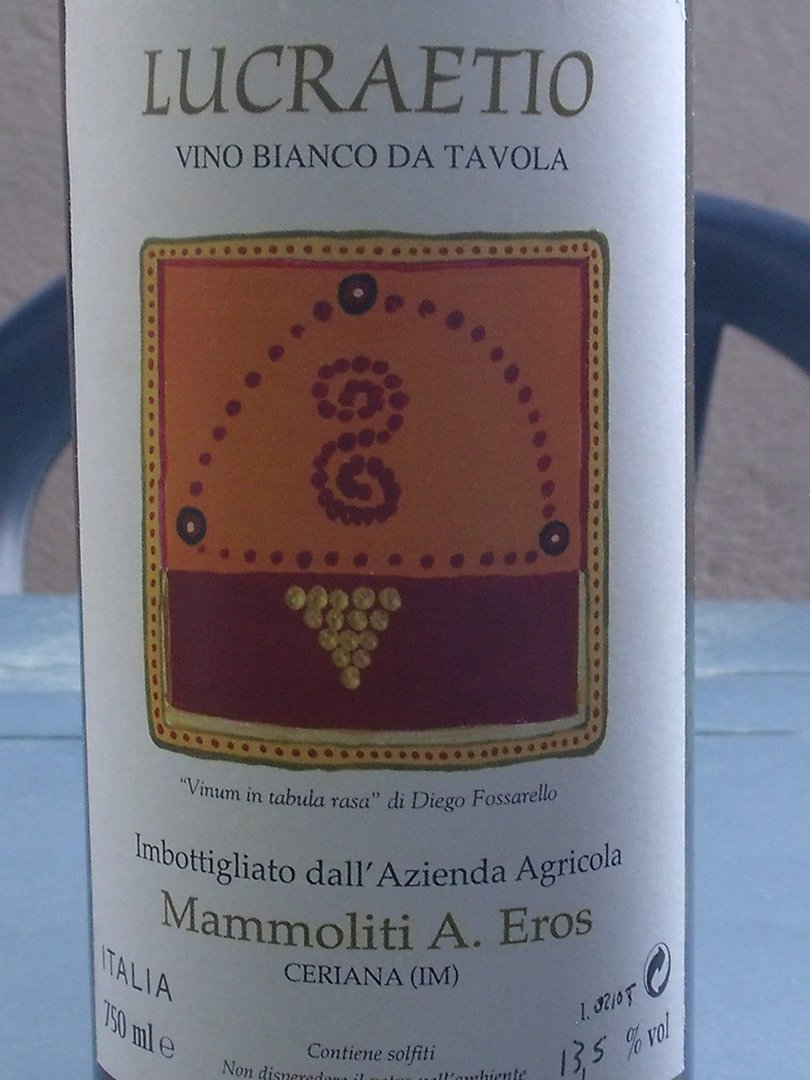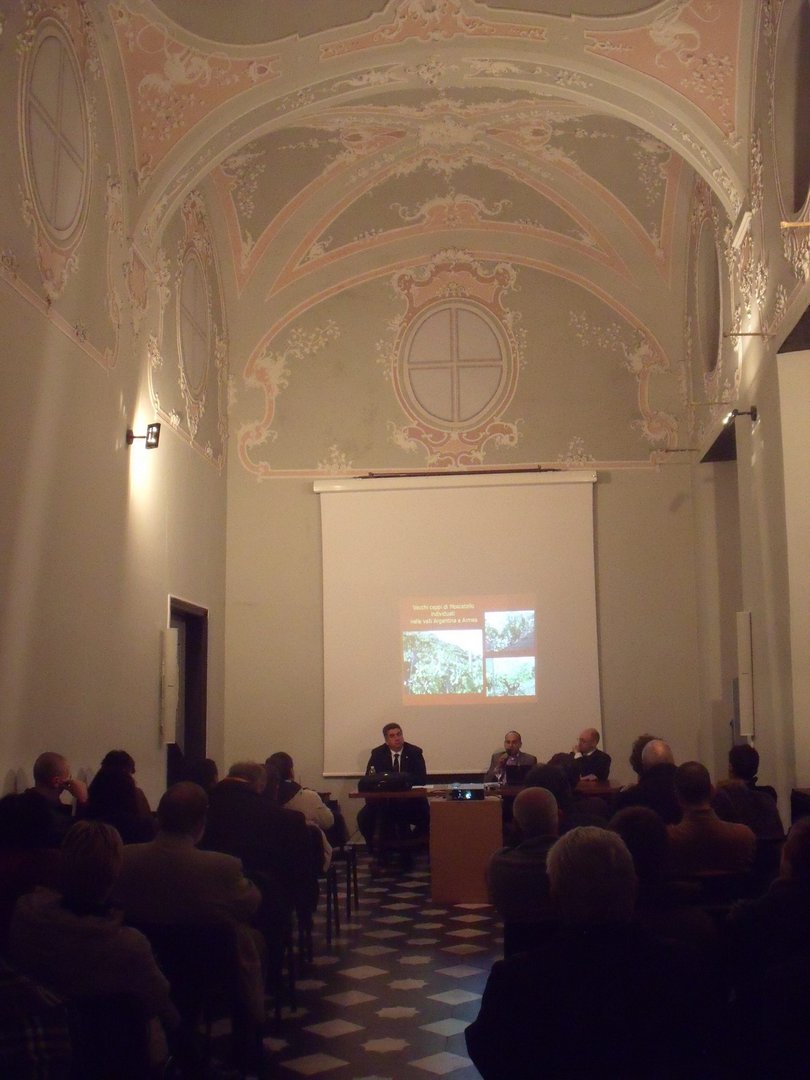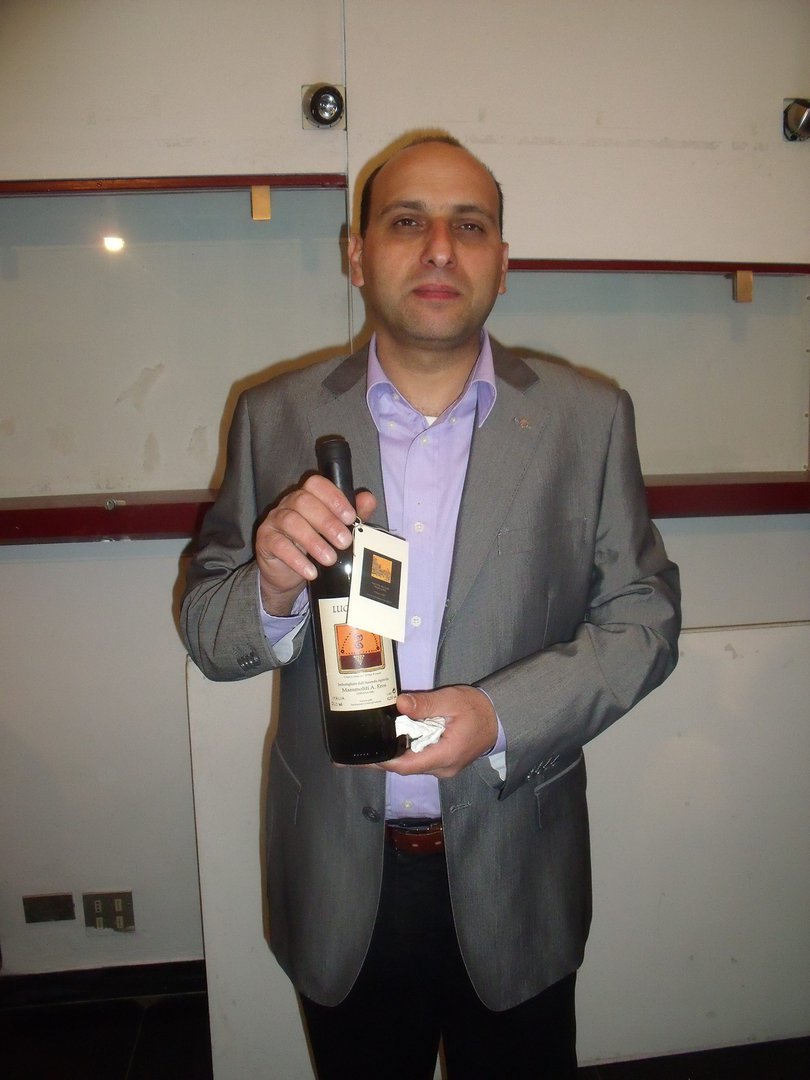Moscato di Taggia
In 2002 Alessandro Carrassale presented a paper on the history of the wines of Taggia. What made this paper interesting to many in his audience is that by the 20th century, Taggia was no longer known for its wines, but for its olive oil and for most listening to the talk, it was a revelation to hear how in medieval times the sweet muscat wines of Taggia were famous - shipped to the Vatican where it was greatly appreciated by the papal court and shipped as far away to the north as England.
One member of the audience was a wine maker called Eros Mammoliti and he approached Alessandro with a crazy idea. What about trying to re-create the wine? Crazy indeed. To start with, there were no muscat vineyards in Taggia.
The first step then was to find the right muscat variety, and for this they contacted Anna Schneider at the University of Turin. Between them they advertised around Taggia - did anyone have any old muscat vines in their fields or gardens? A number of people came forward and sixty-nine vines were discovered. Micro-vinification was carried out on the grapes from each individual vine to identify which vine had the greatest muscat aroma. The vine with the greatest aroma had 3-4 times more aroma than any of the others, one had moderate aromatics but the rest appeared to have lost any pronounced moscato character.
At first the selected variety appears to have too much aroma - but this appears to calm down with age. (Question: muscat wines are often drunk when young, fresh and floral. Are these wines intended to be aged/ and if so what about acidity?)
Having selected the best clones, now called clone Taggia, cuttings were taken until there were enough vines for an experimental vineyard. Eros then had the task to try and create the best wine. A variety of variations were made. They worked on 7 plants - only one was healthy. By 2011 had 500 plants. The first vineyard planted in 2004 - so vines are all still very young.
Attempts? to be made to make a passito liquoroso style wine made from dried grapes. Potential for commercial growth.
Is this muscat the same as the clone which was grown around Nice.
At the Wine Conference in Taggia in 2011, three different Moscato di Taggia 2010 wines were tasted.
In March 2012, at another presentation of the history of the re-creation of these wines in Taggia, this time promoting the idea of a unique wine with a good marketing story to the town. A number of restaurants decided to list the wine and a growing number of producers have decided to also plant the muscat vines and to try and make the best Moscato di Taggia. One producer was digging up his 40 year old Vermentino and had decided to replace it with Moscato - so by 2016 there should be much more Moscato di Taggia on the market.

Moscatello Lucraetio
May 2011 Taggia
Moscatello Lucraetio I Aromas of elderflower. Muscat de Frontignan. VA? Acetic. Vincent Gerbi said the muscat aromatics are too high. Slightly bitter and dry on finish which is in direct conflict with the lovely aromatic nose. Very unusual. Moscatello Lucraetio II Very lightweight aromas. Hardly any muscat . But better balance on the palate. Very dry, but not the excessive bitterness. On finish, bitterness comes through - hints of ginger and slightly prickily. Bitter marmalade. Better - but lost the floral aromas. Quite a heavy wine. Agreed with Anna Schneider that this was best. Moscatello sparkling. Sweet and sickly on the nose. Sherbety on the palate. Lacks acidity to counter fizz. Mealy, apples, grapey.
March 2012 Taggia

- Conference on Moscato di Taggia in a Taggia palazzo

Eros Mammolito and his Moscato di Taggia Moscato Secco 2010 Lovely grapey fruit, fresh and delicate. A little too delicate to be an outstanding wine. 14.5/20